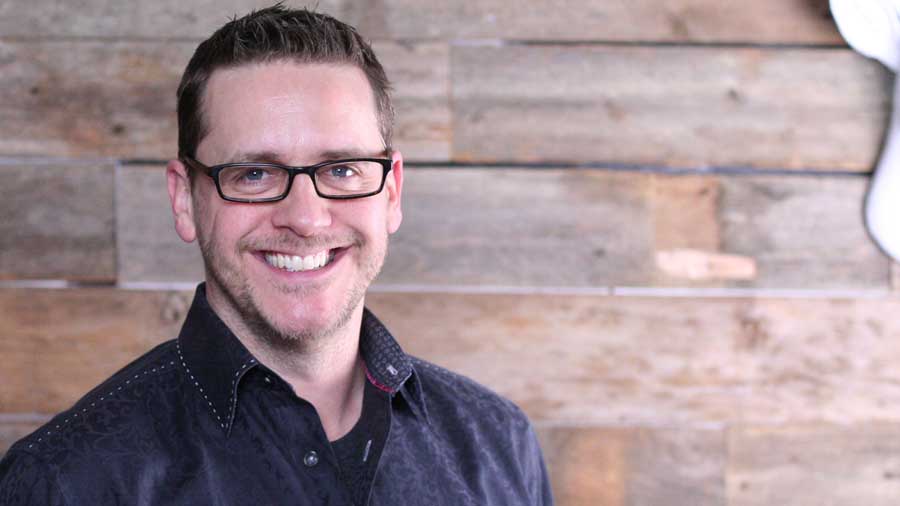
Editor’s note: This material is reprinted with the permission of J Cornelius. The following excerpt is from Loops: Building Products With Clarity & Confidence.
The first known brand was an engraving found on a cork from a bottle of oil in ancient Mesopotamia that dated back to around 3000 BC. In those times, Mesopotamian traders would bring bottles of oil to market with their brand on it, and buyers knew they were getting oil that had an established level of quality, taste, and price.
The modern usage of the word “brand” comes from branding cattle. Ranchers would burn markings into the sides of their cattle to show who owns the cow and where it comes from when it’s brought to market. The brands also helped in the case of cattle rustlers stealing livestock from ranchers. There’s no doubt who those cows belong to.
Let’s say I have a large, grass-fed cattle ranch called Double J, and I brand my cattle with my Double J logo. When my cattle come to market, you can see my logo and know that the cattle come from a large ranch and are grass-fed.
There’s a certainty a logo provides to consumers. It’s a mark that distinguishes products from other products.
This is where the misconception of a logo being a brand originated. A brand goes much deeper than just a logo.
A brand exists at the intersection of what your company does and how people feel about it.
Everything that goes into your brand gives people an idea of the quality of the product or the experience they’re going to have.
Think about Coca-Cola, which is arguably the largest, most recognized brand on the planet. The first half of the equation (what Coca-Cola does) is obvious: they make beverages. What’s funny is that the way people feel about Coca-Cola—the Brand Affinity—has changed throughout the decades, and the company has had to respond to these changes.
As people have recently become more health-conscious, you’ve seen Coca-Cola shift their products accordingly. They purchased Dasani, a bottled water brand. They started making Coke Zero to appeal to people who were concerned about calories. They created CocaCola Life, which is sweetened with cane sugar instead of high-fructose corn syrup.
All of these changes in product are the result of changing customer demand. You see, even the biggest brands in the world have to listen to their customers or risk losing them.
Brand Affinity can also shift with zero changes to the packaging or product.
Take Tesla for example, a brand everyone is hot on right now. It’s understandable—they make sexy electric cars and invent cool technology. But what if Tesla batteries started blowing up while people were driving and people died? Tesla’s Brand Affinity would be badly hurt, without any changes to the logo, name, or product.
A brand is not only the name or the logo. Those things matter, but ultimately, your brand is what your company does and how your customers feel about it. If you keep that in mind, you’ll be able to create a stronger brand that resonates with your target market. A stronger brand will allow you to build trust and do more than you ever imagined because customers more easily and willingly buy from a brand they trust.
First impressions of your brand
When you start to think about your brand, imagine how you’d want it personified.
If your brand was a person and they walked into the room right now, what would you say about them? How would you describe them?
What do they look like? How are they dressed? How do they act? How do they carry themselves? How do they talk?
Tall or short? Wearing a suit or swim trunks?
Authoritative or more laid back?
Reserved and shy? Or vibrant and boisterous?
Casual and using slang, maybe with some type of accent, or using words and phrases that are proper and articulate?
These types of physical and personality characteristics create a first impression when we meet someone. It’s the same with your brand. What do you want the first impression of your brand to be? This might seem silly, but remember that you’re designing products for humans, which means your brand must connect with people when they see it for the first time.
If your brand personality is distinguished, academic, reserved, and with an intimidating vocabulary, you might not do very well selling urban streetwear to teenagers.
If your brand was a person, would your customers want to get coffee, lunch, or a beer with them and hang out? Could your brand and your customer be friends? You want to create a bond with your customer that feels natural and complementary.
At the same time, a good brand personality doesn’t duplicate the customer—it’s compatible with the customer. You don’t want to mirror the customer because many people don’t like looking in a mirror. They want to relate to your brand but also picture themselves in a better place because of what you offer, which means you want to be a bit aspirational.
As you start to think about the personality, you’ll want to dig deep and identify ways to describe your Brand Ethos. A Brand Ethos is a set of words or phrases that describe what your brand is and is not. These words and phrases define the characteristics and personality of your brand in a way that help make it real and provides a reference for all future decisions about how your brand acts. It will become the cornerstone you build your brand upon.
Events, Resources, + More
New Data: Content Ops + AI
Get the latest report from the world's largest study of content operations. Benchmarks, success factors, commentary, + more!
The Ultimate Guide to End-to-End Content
Discover why + how an end-to-end approach is critical in the age of AI with this comprehensive white paper.
The Content Advantage Book
The much-anticipated third edition of the highly rated book by Colleen Jones is available at book retailers worldwide. Learn more!
20 Signs of a Content Problem in a High-Stakes Initiative
Use this white paper to diagnose the problem so you can achieve the right solution faster.






Comments
We invite you to share your perspective in a constructive way. To comment, please sign in or register. Our moderating team will review all comments and may edit them for clarity. Our team also may delete comments that are off-topic or disrespectful. All postings become the property of
Content Science Review.